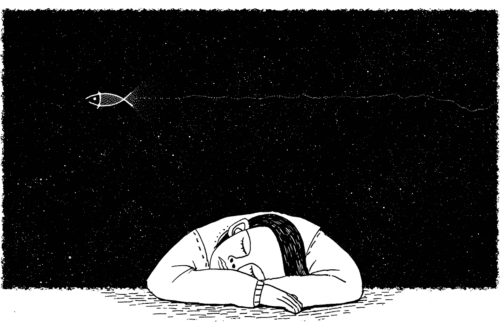Challenges, Support, and Hope for the Future
In a world that’s constantly evolving, it’s time we shine a spotlight on a critical issue that affects millions: behavioral health in the LGBTQ+ community. From higher rates of mental health disorders to unique challenges in accessing care, the LGBTQ+ community faces hurdles that demand our attention and action. But here’s the good news: we’re not just talking about problems – we’re exploring solutions and paving the way for a brighter, more inclusive future.
Understanding LGBTQ+ Behavioral Health: More Than Just Statistics

Let’s start with the facts: according to the National Alliance on Mental Illness (NAMI), LGBTQ+ adults are more than twice as likely to experience a mental health condition compared to heterosexual adults 1. But these aren’t just numbers – they represent real people, real struggles, and real opportunities for change.
The higher prevalence of behavioral health issues in the LGBTQ+ community isn’t because of who they are, but because of the world they navigate. Imagine trying to be your authentic self in a society that doesn’t always understand or accept you. It’s like running a marathon with obstacles that others don’t face – exhausting, challenging, and sometimes downright unfair.
The Impact of Minority Stress: A Heavy Burden to Bear
Enter the concept of minority stress, introduced by psychologist Ilan Meyer. This theory explains how the chronic stress experienced by marginalized groups, including LGBTQ+ individuals, contributes to poorer mental health outcomes 2. It’s not just about one bad day or one negative experience – it’s about the cumulative effect of navigating a world that wasn’t designed with you in mind.

Minority stress for LGBTQ+ people can show up in various ways:
- External stressors: Discrimination, prejudice, and stigma from society
- Internalized stigma: Negative self-perceptions resulting from societal attitudes
- Concealment stress: The psychological burden of hiding one’s identity
- Rejection sensitivity: Constant worry about potential rejection
These stressors can lead to increased rates of depression, anxiety, substance use disorders, and even suicidal ideation. The Trevor Project’s 2021 National Survey on LGBTQ Youth Mental Health reported alarming statistics: 42% of LGBTQ youth seriously considered attempting suicide in the past year, with more than half of transgender and nonbinary youth having seriously considered suicide 3.
But remember, these challenges aren’t insurmountable. By understanding them, we can work towards solutions that make a real difference in people’s lives.
Discrimination in the workplace can be another significant source of stress for LGBTQ+ individuals. Facing unfair treatment based on sexual orientation or gender identity not only impacts mental health but can also lead to challenges in employment stability and personal well-being. This guide on LGBTQ Discrimination in the Workplace provides insights into understanding these impacts, recognizing discriminatory practices, and fostering more inclusive environments. Such resources are valuable steps toward creating equitable and supportive workspaces.
Unique Behavioral Health Challenges in the LGBTQ+ Community
While the LGBTQ+ community is diverse, with each subgroup facing its own set of challenges, several overarching issues affect many within this population. Let’s break them down:
Mental Health Disorders: A Closer Look
Depression and anxiety are particularly prevalent in the LGBTQ+ community. A study published in the American Journal of Psychiatry found that lesbian, gay, and bisexual adults were more than twice as likely to have a mental health disorder in their lifetime compared to heterosexual adults 4.
For transgender individuals, gender dysphoria can be a significant source of distress. While not all transgender people experience gender dysphoria, for those who do, it can contribute significantly to depression and anxiety. Access to gender-affirming care can make a world of difference for many individuals.
It’s also worth noting that older LGBTQ+ adults face unique mental health challenges. Many have lived through periods of intense societal discrimination and may have experienced trauma related to their sexual orientation or gender identity. As they age, they may face isolation, particularly if they’ve been estranged from their families of origin.
Substance Use Disorders: A Complex Relationship
The Substance Abuse and Mental Health Services Administration (SAMHSA) reports that sexual minority adults are more than twice as likely as sexual majority adults to have used illicit drugs in the past year 5.
This higher prevalence of substance use can be attributed to several factors:
- Coping with minority stress and discrimination
- Self-medication for untreated mental health issues
- The historical significance of bars and clubs as safe spaces for LGBTQ+ individuals
For many LGBTQ+ individuals, substances may serve as a coping mechanism for dealing with societal stigma, discrimination, and the stress of concealing one’s identity. While this self-medication can provide temporary relief, it often leads to long-term substance use problems.
Barriers to Accessing Care: Navigating a Broken System
Despite the higher prevalence of behavioral health issues, LGBTQ+ individuals often face significant barriers when seeking care. A survey by the Center for American Progress found that 8% of LGBTQ+ respondents had avoided or postponed needed medical care due to disrespect or discrimination from healthcare providers 6.
These obstacles can include:
- Lack of LGBTQ+-competent providers
- Fear of discrimination or stigma in healthcare settings
- Financial barriers due to higher rates of unemployment or underemployment
- Legal barriers, particularly for transgender individuals in some regions
The lack of LGBTQ+-competent providers is a significant issue in many areas, particularly in rural or conservative regions. Many healthcare providers receive little to no training in LGBTQ+ health issues during their education, leaving them ill-equipped to provide culturally sensitive care.
For transgender individuals, accessing care can be particularly challenging. Many face barriers in obtaining gender-affirming care, including hormone therapy and surgeries. Insurance coverage for these treatments is often limited or non-existent, making them financially out of reach for many.
Support Strategies: Building a Better Future
Now that we’ve laid out the challenges, let’s talk solutions. Because here’s the thing: we’re not just observers in this story – we’re the authors. We have the power to write a new chapter for LGBTQ+ behavioral health. Here’s how:
Promoting LGBTQ+-Affirming Healthcare: More Than Just Tolerance
Creating healthcare environments that are welcoming and affirming for LGBTQ+ individuals is crucial. This involves:
- Training healthcare providers in LGBTQ+-specific health issues and cultural competency
- Implementing non-discrimination policies in healthcare settings
- Using inclusive language and respecting patients’ pronouns and chosen names
The National LGBT Health Education Center provides resources and training for healthcare organizations to become more LGBTQ+-affirming 7. This isn’t just about being “politically correct” – it’s about providing better, more effective healthcare for everyone.

LGBTQ+-affirming healthcare goes beyond simply being non-discriminatory; it actively acknowledges and addresses the unique health needs of LGBTQ+ individuals. This can include understanding the specific health risks and screenings needed for different LGBTQ+ subgroups, being knowledgeable about gender-affirming care for transgender patients, and recognizing the impact of minority stress on overall health.
Increasing Access to Mental Health Services: Breaking Down Barriers
Improving access to mental health services for LGBTQ+ individuals is essential. This can be achieved through:
- Expanding telehealth options, which can be particularly beneficial for those in rural areas or those who fear discrimination in in-person settings
- Providing sliding-scale or free mental health services specifically for LGBTQ+ individuals
- Creating support groups and peer counseling programs within LGBTQ+ communities
Telehealth has emerged as a powerful tool for increasing access to mental health services for LGBTQ+ individuals. It can provide a safe and confidential way to access care, particularly for those who live in areas without LGBTQ+-affirming providers or who fear being seen entering a mental health clinic.
Support groups and peer counseling programs can be invaluable resources for LGBTQ+ individuals. These groups provide a sense of community and allow individuals to share experiences and coping strategies with others who understand their unique challenges.
Addressing Substance Use Disorders: Compassion Over Judgment
Tackling substance use disorders in the LGBTQ+ community requires targeted approaches:
- Developing LGBTQ+-specific substance use treatment programs that address the unique factors contributing to substance use in this population
- Promoting harm reduction strategies that acknowledge the role of substances in some LGBTQ+ social settings
- Addressing co-occurring mental health issues alongside substance use treatment
LGBTQ+-specific substance use treatment programs can provide a safe and understanding environment for individuals to address their substance use issues. These programs should be equipped to address the underlying factors that may contribute to substance use in LGBTQ+ individuals, such as minority stress, trauma, and internalized stigma.
Harm reduction strategies are particularly important in addressing substance use in the LGBTQ+ community. These approaches acknowledge that abstinence may not be a realistic or desired goal for everyone and instead focus on reducing the negative consequences associated with substance use.
Fostering Supportive Communities: We’re Stronger Together
Building strong, supportive communities can serve as a protective factor against behavioral health issues. This can involve:

- Creating LGBTQ+ community centers that offer resources, support groups, and social activities
- Developing mentorship programs that connect LGBTQ+ youth with supportive adults
- Promoting LGBTQ+ visibility and representation in media and public life
The Center for American Progress highlights the importance of such community supports in promoting LGBTQ+ mental health 8.
LGBTQ+ community centers can serve as crucial hubs for support and resources. These centers often provide a range of services, from health clinics and mental health counseling to social events and support groups. They can be particularly important in areas where LGBTQ+ individuals may feel isolated or unsupported.
Mentorship programs can be life-changing for LGBTQ+ youth. Having a supportive adult who understands their experiences can provide a sense of hope and guidance, particularly for youth who may not have support from their families.
Advocating for Policy Changes: Changing the System from Within
Systemic change is necessary to address many of the root causes of behavioral health disparities in the LGBTQ+ community. This includes:
- Pushing for comprehensive non-discrimination protections for LGBTQ+ individuals in healthcare, employment, and housing
- Advocating for increased funding for LGBTQ+-specific health research and programs
- Supporting policies that ban conversion therapy and other harmful practices
Policy changes can have a significant impact on the behavioral health of LGBTQ+ individuals. Non-discrimination protections can reduce the stress of navigating a world where discrimination is legal and provide recourse when discrimination does occur.
Increased funding for LGBTQ+-specific health research is crucial for developing evidence-based interventions and treatments. Currently, there’s a significant gap in research on LGBTQ+ health issues, particularly for transgender and non-binary individuals.
Banning conversion therapy is another critical policy goal. Conversion therapy, the discredited practice of attempting to change an individual’s sexual orientation or gender identity, has been shown to cause significant psychological harm. According to a study published in the American Journal of Public Health, individuals who have undergone conversion therapy are more than twice as likely to attempt suicide compared to those who haven’t 9.

The Role of Allies: Be the Change You Want to See
While much of the work in addressing LGBTQ+ behavioral health challenges must be done by healthcare providers and policymakers, allies play a crucial role. Here are some ways allies can support LGBTQ+ behavioral health:
- Education and Awareness: Educate yourself about LGBTQ+ issues and share this knowledge with others. This can help reduce stigma and increase understanding in the broader community.
- Advocacy: Use your voice to advocate for LGBTQ+ rights and healthcare access. This might involve contacting legislators, participating in protests, or supporting LGBTQ+-affirming organizations.
- Creating Inclusive Spaces: In workplaces, schools, and community organizations, work to create more inclusive environments for LGBTQ+ individuals. This might involve advocating for non-discrimination policies or gender-neutral bathrooms.
- Supporting LGBTQ+ Youth: If you work with youth, such as teachers or coaches, you can make a significant difference by providing a supportive presence and intervening in cases of bullying or discrimination.
- Listening and Validating: Sometimes, the most important thing an ally can do is simply listen to LGBTQ+ individuals and validate their experiences. This can provide crucial emotional support.
The Future of LGBTQ+ Behavioral Health: Hope on the Horizon
While the challenges facing LGBTQ+ behavioral health are significant, there are reasons for optimism. Increasing societal acceptance of LGBTQ+ individuals, particularly among younger generations, may help reduce minority stress over time. Advances in telehealth and digital mental health interventions may increase access to care for LGBTQ+ individuals, particularly in underserved areas.
However, there’s still much work to be done. Continued research into LGBTQ+ health disparities and effective interventions is crucial. Training for healthcare providers needs to be expanded to ensure culturally competent care for LGBTQ+ individuals. And policy changes are needed to address systemic barriers and discrimination.
Conclusion: A Call to Action
The behavioral health challenges faced by the LGBTQ+ community are significant, but they are not insurmountable. By understanding these unique challenges and implementing targeted support strategies, we can work towards a future where LGBTQ+ individuals have equal access to quality behavioral healthcare and the support they need to thrive.
As we continue to make progress, it’s crucial to remember that each person’s experience is unique. The most effective approaches will always be those that respect individual identities, experiences, and needs while working to dismantle the systemic barriers that contribute to behavioral health disparities.
By combining increased awareness, improved healthcare practices, supportive communities, and policy changes, we can create a more inclusive and healthier world for LGBTQ+ individuals. The journey may be long, but every step towards better behavioral health support for the LGBTQ+ community is a step towards a more equitable and compassionate society for all.
As we move forward, let’s celebrate the resilience and strength of the LGBTQ+ community. Despite facing significant challenges, many LGBTQ+ individuals thrive and make invaluable contributions to our society. By addressing the behavioral health challenges faced by this community, we not only improve individual lives but also enrich our entire society with the full participation and flourishing of LGBTQ+ individuals.
The future of LGBTQ+ behavioral health is in our hands. Whether you’re a healthcare provider, a policymaker, an ally, or a member of the LGBTQ+ community, you have a role to play in creating positive change. Let’s work together to build a world where everyone, regardless of their sexual orientation or gender identity, has the support they need to live happy, healthy lives.
Remember, progress is possible. We’ve seen it before, and we’ll see it again. But it takes all of us, working together, to make it happen. So, what will you do to support LGBTQ+ behavioral health? The time for action is now. Let’s make a difference, together.
Discover more from Whispers of Insight
Subscribe to get the latest posts sent to your email.





